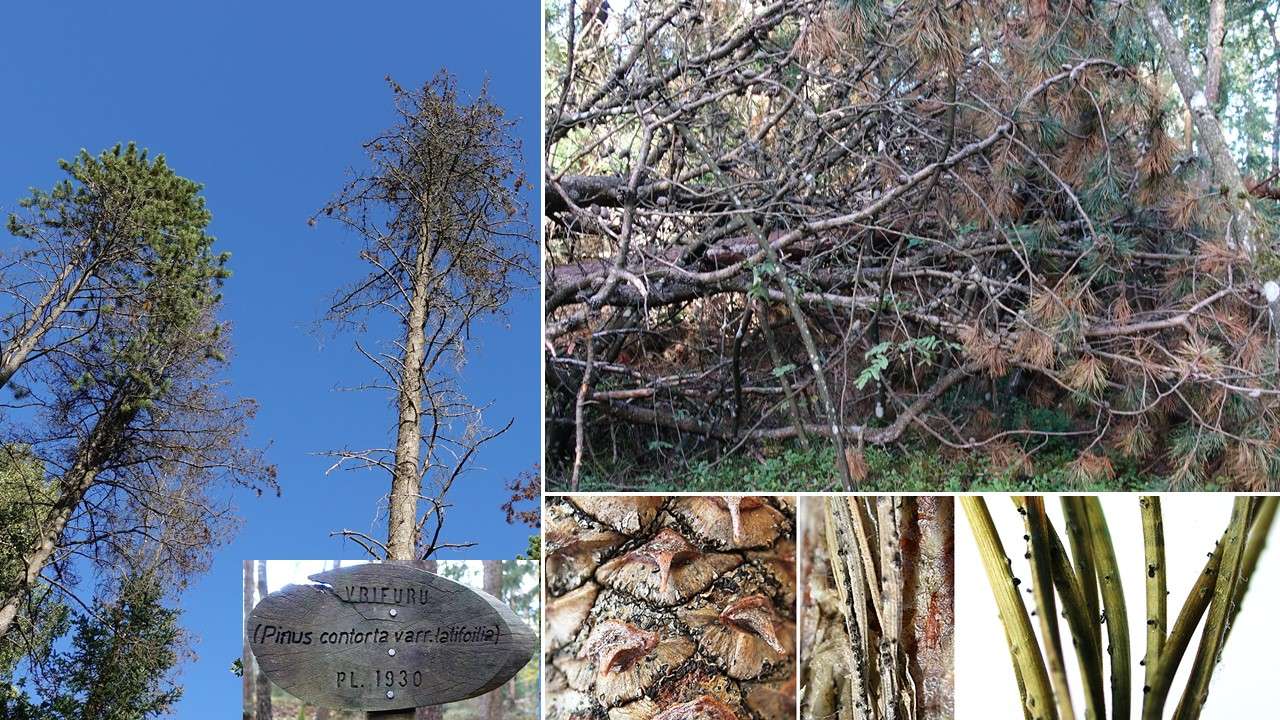New invasive fungus on pine trees in Norway

Photo: Venche Talgø
Diplodia sapinea is an alien, invasive fungus that damage conifers. Pines are particularly vulnerable, and the fungus has caused significant losses for forestry and nurseries in Southern Europe. In August 2020, a serious outbreak caused by this fungus was discovered in Norway.
The fungus spreads locally with rain splash or insect vectors. Across longer distances, the fungus is spread via trade of infected plants or seeds.
The disease caused by this fungus, so-called Diplodia shoot blight and canker, can lead to major losses in forestry, and for forest nurseries as it can be transmitted through seeds, and thereby killing seedlings. The fungus is common in Southern Europe, but in recent years it has moved further north, probably because of global warming. In 2013, it was discovered in Sweden, and has since attacked Scots pines in several places in our neighbouring country.
In Norway, a few sporadic discoveries of the fungus were made previously, but the damage was very limited.
“It was in 2020 that we first found a larger outbreak of the fungus in stressed and dying lodgepole pines in Nordskogen in Ås Municipality,” says Venche Talgø, researcher at NIBIO.
“This attack may have been worsened by the drought in 2018,” she says.
To prevent the fungus from spreading to other species of pine and spruce, the entire stock of lodgepole pines was felled in the winter of 2021, and just before Easter the branches and twigs were burned.
Martin Pettersson, researcher at NIBIO, adds that D. sapinea is an alien fungal species in Norway and a potential threat to our most important forest trees, which are Scots pine and Norway spruce. But there are also many other vulnerable species of pine, especially in urban landscapes, for instance mountain pine, dwarf pine, ponderosa pine, Siberian pine, and Macedonian pine.
Many of these can be sensitive to infection of D. sapinea because they have not fully adapted to the Norwegian climate.
Contacts

Contacts

